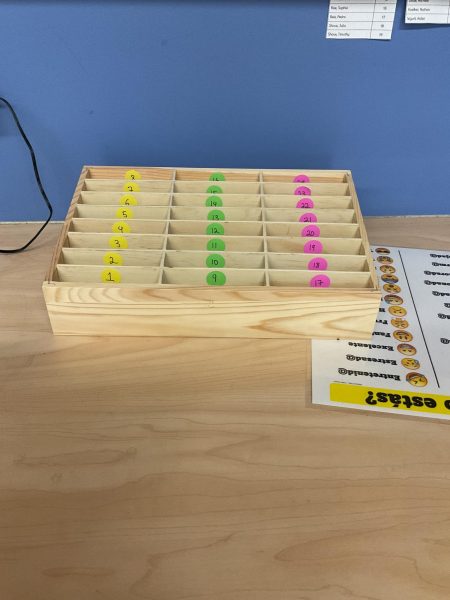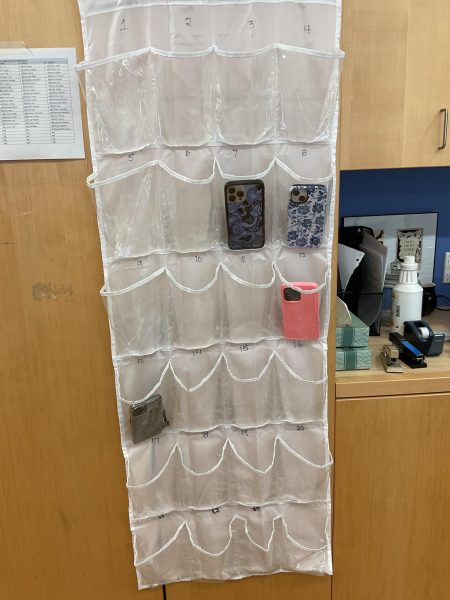In November of 2024, Pew Research Center found that 98% of Americans own some form of a cell phone, meaning a majority of Americans have a phone. With this comes great fear regarding the potential harm and distraction it might impact on younger American students.
According to a statement made by the Connecticut State Board of Education, in August of 2024, “The Board strongly recommends that such policy restricts the use of cell phones during the school day to ensure student engagement in learning, support emotional well-being, and strengthen students’ interpersonal skills, peer interaction, and social communication.”
However, what that looks like in practice changes from school to school. At Morgan, the rule on cell phones is written in the Morgan Student Handbook. It states, “Morgan’s classroom cell phone policy is “‘Silent and Away’ (unless a teacher determines the need for students to use their phones for educational use in the classroom).”
However, some teachers have different rules when it comes to the devices. For example, Karla Rivadeneria, a Spanish teacher at Morgan, uses a phone box. Students put their phones in the box at the beginning of the class and pick them up at the end. “I think [cellphones] are a distraction. When you’re in class, teachers are putting a lot of effort into teaching, students need to make sure they are learning. Not only is it a distraction, but it is also very rude.”

According to a research done by Pew Research Center in 2024, it states that 72% of high school teachers thought cellphones were a major distraction to students in the classroom.
Rivadeneria does have exceptions to her policy, such as taking photos, using it as a backup if a student’s chromebook is dead, or voice recording for an assignment.
If someone in Rivadeneria’s class were to be caught using a phone, she has a set of consequences in place. “If I see you using your phone, it’s a detention with me, and if I see it again there are more consequences.”
Julie Frydenborg, an English teacher at Morgan, converted back to the use of phone pockets in her classroom. “ I tried the off and away approach, but it did not work. Kids were still distracted and looked at their phones in their pockets.”
Even though Frydenborg has this policy, she still has an expedition to the rule, which is if there is an emergency at home and a student asks to have their phone with them.
Frydenborg shared that the kids in her class are pretty good at not going on their phones in class, but she does occasionally need to remind students to put their phone in the phone pocket. “If they are not listening, the phone stays on my desk, but students mainly put their phones in their pockets when asked.”
Both of these polices fall in line with what is written in the Morgan Student Handbook, along with other punishments such as a phone call to parents or guardians, written behavior form, assistant principal calls home, or the loss of cell phone privileges for the entire day.
Different schools in Connecticut have different policies and ways of stopping the cell phone takeover. Waterbury, for example, is introducing a policy that removes the ability for students to use their phones at all.
On the Waterbury Public School’s website, it says that Waterbury is choosing to use something called a Yondr pouch, which is used in more than 2,000 schools across 16 countries.
According to the official Yondr website, it was founded in 2014 with the mission to eliminate technology distractions. Then the idea blossomed when the creator, Graham Dugoni, had the idea to make schools and music venues phone free. These pouches cost about $30, and are considered school property.
In Waterbury, students will put their phones in the pouches at the beginning of the school day, and they will then be locked by staff. The students keep their phones with them throughout the day, but cannot open them until the end of the day.
When asked about the pouches, Rivadeneria did not know what they were, but understood why some schools would have that rule. She did not exactly agree with the Yondr pouches, but had a different way to stop the use of phones in school.
“At other schools I’ve taught at, they have a cell phone blocker that takes away WIFI and data,” Rivadeneria stated. “I liked being in those environments. The kids were focused and working. They didn’t complain much either.”

Emerson Dunning, a sophomore at Morgan, does not agree with the idea of having phones be locked up during school. “I feel like in certain situations, it’s necessary to have a phone. Like if I were in a lockdown, I would want to be able to text my parents. I want to be able to text them in certain safety situations, too. Also, I want to have my phone on me if my parents were trying to text me something really important at school.”
Dunning references the fact if there was ever an emergency in school that could put her in danger. This has been a huge debate online, many arguing that students need their phones to contact parents if there was ever an emergency. The main example people use is school shootings.
On X, formerly known as Twitter, a user by the name of ‘heyyitsjenna’, shared out their opinions on the issue, which was that students should have access to their phones, since the school shooting crisis is so large in America and phones could allow for communication to parents in these situations. The tweet went viral, gaining 239 thousand likes and 985 comments that had a majority agreeing with the user.
Dunning also feels as though cell phones should not be seen as a huge issue in school. “For the most part, as long as phones are turned off and put away, they should not be a huge issue. If certain kids are on their phones all the time, they should get consequences, but other than that it’s not that big of a deal.”



